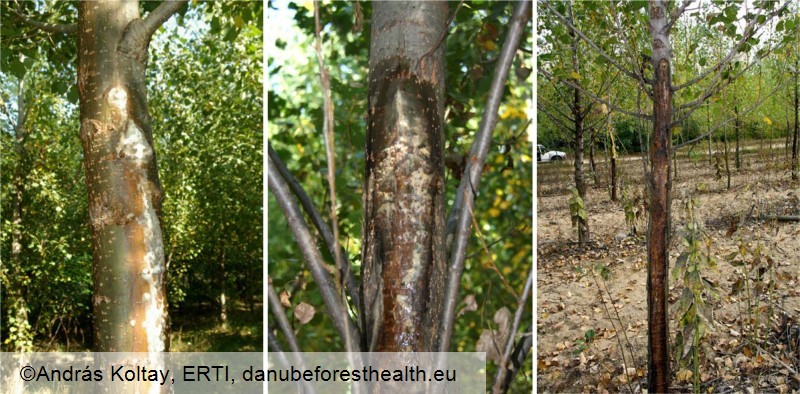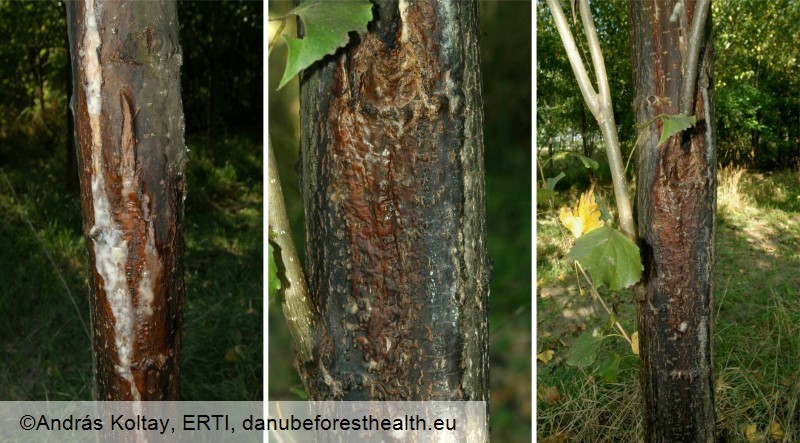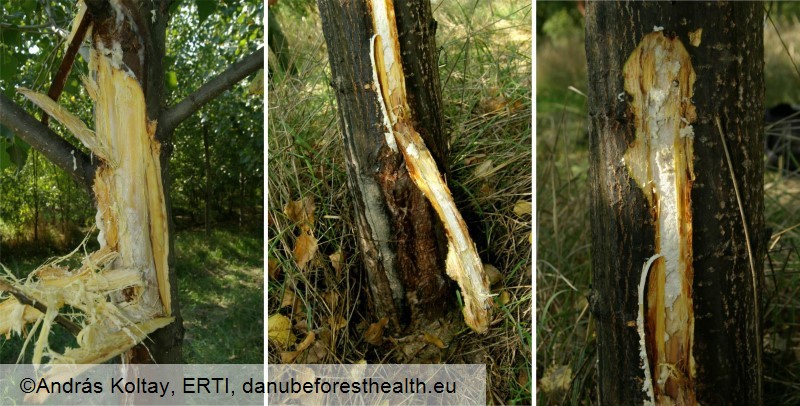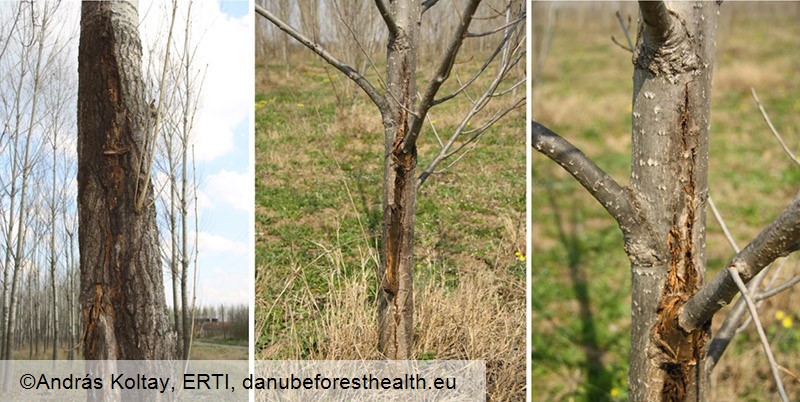Bacteria
Oozing bark canker of poplar
Lonsdalea populi
András Koltay
|
|

Fig. 1. White foamy mucus bleeds out from wounds of the stem.

Fig. 2. The bark becomes discolored, with brownish-purple or black areas, and with blisters.

Fig. 3. White and stinky mucus develops under the bark.

Fig. 4. Older symptoms, previous yearly dried symptoms next spring
DETECTION PERIOD:
Mucus phase during the vegetation period, cankers during the whole year.
DESCRIPTION:
In the end of spring or in early summer white foamy mucus bleeds out from wounds of the stem. The wounds can be on various heights of the stem. The bark becomes discolored, with brownish-purple or black areas, and with blisters. The bark dies under the mucus, and the tissues under the bark also starts to rot. White and stinky mucus develops under the bark. The necrosis can be even some meters in length. Many secondary organisms can colonize the mucus: fly larvae, nematodes, bacteria, fungi, etc. The mucus bleeding stops in the autumn, the dead bark tissue dries out and cracks up. In the next year the margins of the wound heal, but the center of the wound remains usually uncovered, so the degradation of the timber may start here, which leads to the death of the tree.
HABITAT:
Poplar hybrids (Populus x euramericana).
STATUS:
Only found in central Hungary (2008), Spain (2002), and China (2006) until now.
IMPACT:
Causes necrosis in the bark, wood rot, dieback of poplars. Most frequently found in young (3-10 years old) hybrid poplar plantations. Sometimes it causes damage also in older poplar stands/plantations. Extent of the infestation varies, sometimes reaches 70-80%, on average is 10-30%.
SIMILAR SPECIES:
None, if white mucus is present.
|